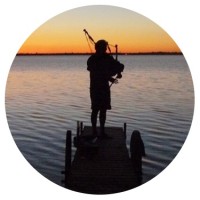Police Uniforms
There has been a lot of news about abusive police in the past few years:
• the tasering death of a confused, tired, big man by RCMP officers in Vancouver
• the shooting death of a lone, knife armed, high young man isolated on a streetcar in Toronto
• the mishandling of various intoxicated (and probably lippy) people being processed at local lockups.
What is going on? Has there been a subtle change in policing?
Over a decent length of time, I’ve known a number of police officers from the three levels of forces in Canada. They are decent normal people whom I call friends. If there has been a change. Why?
This is a personal observation, but I believe it may have some truth. Television shapes our perception of things in subtle ways beyond what manifests on the surface. One of the most popular TV genres is the Police drama. They have changed over time. We used to see officers in their white shirt, dark pant “police hat” uniform performing their duties. Yes they were armed, but they were portrayed as our friend and protector. Detectives were dressed in sports jackets, shirts and ties. They looked like people there to both protect and defend.
Now the TV officer is portrayed in one colour, dark, cargo pocketed, flack jacketed uniforms with ball caps. Detectives often are shown very much dressed down also in protective vests and baseball caps. Somehow this does not engender the feeling of friendly respect that the older uniform created. Remember when the black hat was the villain and the white hat the hero? The dark uniform is very much closer to the former look of the “bad guy”.
TV shows of police now almost always involve a forced entry, guns drawn, noisy scene where the bad guy is deservedly trussed up and taken in. None of my police friends have ever said this is normal. Their jobs are most often quite routine. They hope never to have to use their weapons.
But is that ethic changing? How many “combat” dressed officers whose initial look at policing came from TV think that maybe they should get some of the “action” they’ve seen but haven’t yet experienced?
I had a conversation with a very good friend who, during the wind up of a local sporting event, actually crossed the street so as not to have to walk by a small group of police officers who were together in front of a nearby business. Their presence, although they were chatting and laughing, was imposing and somewhat frightening.
I understand the need for officers to be comfortable and protected when performing their duties. Surely; however, the uniform designers can create a functional, safe look that says respect rather than one that, as now, says aggression. Maybe then the look and the actions could meld and we’d again have that mutual respect.
The Plaidneck
